Welcome to another episode of Wiki Project, where I break down all my recent work with the Giant Bomb Wiki. This particular one I'm on right now, where I'm trying to fix up all 489 pages for games released for the Super Nintendo in 1994, is a bit on the Herculean side. While the round-up I did last year for the Super Nintendo's 1993 output was well-received, it's going to be hard to jam all these '94 games into a single blog. For one thing, it would probably end up being around 20,000 words, and getting folk to read that much about a bunch of anime mahjong games from over a decade ago is a big ask. Too big, by any rational perspective.
Instead, we're going to go at this quarterly report style, as if I wasn't worried that these retro round-ups weren't exciting enough without layering business speak over it. Suffice it to say though, as one of the Super Nintendo's peak years, a lot of excellent and curious games would hit the platform in 1994 as everyone had settled into a comfortable groove with what the system could do. The Super Nintendo, it would be fair to say, was easily the market leader at this time, handily beating out the relatively tired Sega Genesis and the multitude of expensive and underwhelming CD-based consoles that were desparately trying to convince us that discs, not cartridges, were the future. Oh, how we laughed. And then the PlayStation came out. (In late 1994, in fact, alongside the Sega Saturn.)
Well, until then, the Super Nintendo still ruled the roost. Nintendo fans were getting hyped over early pictures of the "Ultra 64", officially announced to the public in the Spring of this year, but most were content to see what all the various first-, second- and third-party developers that Nintendo had wrangled were producing for the SNES in its senior year. 489 goddamn games, turned out.
(A little bit on how I'm presenting this particular Wiki Project. Even within this three month time frame, we're looking at almost a hundred releases, and the recent table-based TurboGrafx rundowns almost killed me. A lot of the Super Famicom games out at this time were dull horse-racing, mahjong, shogi (that's chess but not!) and Pachi-Slots (which are just straight up slots, no pachinko involved), and the SNES saw just as much awfulness in the form of poorly conceived licensed games, so with that in mind I've decided to only highlight the ten "most interesting" games for each month with a few honorable mentions.)
January
Always an inauspicious start to any gaming calendar, as well as the traditional start to most calendars in general, January saw a relatively sparse twenty-one new releases. Doesn't sound bad, but it was the second lowest monthly total of the year and less than a third of what would come our way in December. (Decembers be crazy, y'all.)
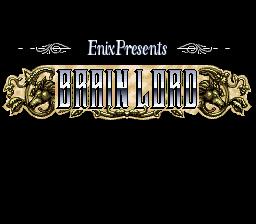 | Brain Lord: During the 16-bit era Enix was a publisher working with many different RPG developers, the most prominent of which included: Chunsoft, with whom Enix worked closely for many of the games in their flagship Dragon Quest franchise and the lesser but still outrageously popular Mystery Dungeon series; Quintet, which put out a lot of very memorable SNES RPGs in the guise of ActRaiser, Soul Blazer, Illusion of Gaia and Terranigma; and Produce, who are perhaps the least well-known and most underappreciated of Enix's frequent partners, maybe better known instead for their collaborations with Hudson developing Super Bomberman games. I've yet to complete a SNES Produce/Enix RPG myself, despite a few attempts to get into one. It's not that their games are bad, necessarily, just kind of obscure, dark in tone and/or mechanically abstruse (which I kinda figure are all big positives now in this post-Souls JRPG world). Produce's three big SNES JRPGs were The 7th Saga, Brain Lord and the Japan-exclusive Mystic Ark, none of which had much in common besides multiple protagonists (one of them, Remeer, appears in all three games), open-world elements and a high level of difficulty. Brain Lord's probably the most accessible gateway of those three, even in spite of its ridiculous name. It's more of an Alundra (or, indeed, Terranigma) take on an action RPG, in the sense that it's just The Legend of Zelda with a few RPG trappings stuck on top. Lots of puzzle dungeons, some nice art design and an unusual game all round. |
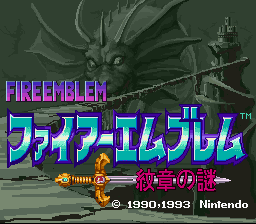 | Fire Emblem Monshou no Nazo: Intelligent Systems's Fire Emblem needs no introduction, seeing how Awakening blew everyone away relatively recently. Monshou no Nazo, or Mystery of the Emblem, is still firmly in Fire Emblem's hazy, Japan-exclusive past. It's the archetypal Fire Emblem experience however, continuing (and building on the blueprint of) Fire Emblem: Ankoku Ryu to Hikari no Tsurugi's adventures of Marth the future Hero-King with all new graphics, new units and a whole second chapter to expand the game's length. I'm not really a Fire Emblem guy, but this seems like the franchise's "A Link to the Past": a big, brash Super Nintendo debut for that series that has everything a fan of the original could want in a sequel. |
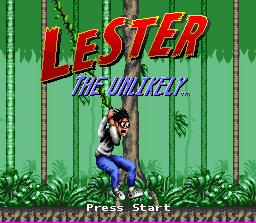 | Lester the Unlikely: Lester's unfortunately a bit notorious for its unusual take on representing a character's dramatic arc through game mechanics. Lester begins as a fraidy cat nerd and learns to find his courage and convinction as the game progresses, meeting the love of his life and the nebulous forces of evil that are threatening the island he washes up on. Unfortunately, this means a lot of the early game involves him running away from Galapagos Turtles in sheer panic, despite the fact that they're some of the least threatening creatures on the planet. It doesn't help that the game controls awkwardly in its attempts to out-Mechner games like Flashback and Prince of Persia with its fancy rotoscoped acrobatics, both of which had recently seen SNES conversions around this time. One of those cases where the devs had some neat ideas but couldn't quite capitalize on them, which to me is infinitely preferable to the many SNES cookie-cutter licensed platformers that shot for the lowest point target on the figurative skeeball table and still missed. |
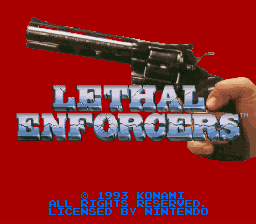 | Lethal Enforcers: Perhaps best known for the giant pink revolver peripheral (the Justifier!), the Super Nintendo Lethal Enforcers was a fairly faithful recreation of Konami's digitized-actors-in-shades light-gun game from the Arcades. I recall it being infamous for its high price tag to relatively brisk (if you could survive long enough) length. Glad we still don't have arguments about game length vs. dollar value these days... |
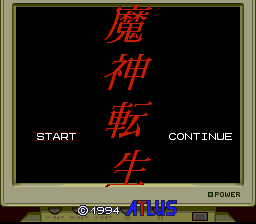 | Majin Tensei: I'm actually showcasing two Shin Megami Tensei games in this Wiki Project (entirely by accident), and Majin's the first of what would become a strategy-focused spin-off series separate from the core's standard first-person dungeon-crawling. It's a lot like Fire Emblem, in fact, with units on grids facing off in detailed little animations that show the exchange of damage. You've still got all the demon summoning/recruiting goodness of the core series as well. Weird that I decided to publish this blog after more details emerged on that Shin Megami Tensei X Fire Emblem crossover, huh? |
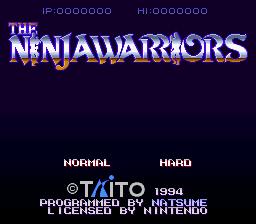 | Ninja Warriors: Not quite the original Taito Arcade brawler, 1987's The Ninja Warriors, but rather an enhanced remake for the Super Nintendo that added a third character (Kamaitachi, the scythe-wielding endoskeleton) and made the gameplay a little closer to Final Fight than the original's Rush'n Attack. I mention this one both for its great soundtrack (though there's sadly no Daddy Mulk, as far as I can tell) and how most of this wiki page's resources had to be carefully extricated from the core The Ninja Warriors page. Still, an easy to mistake for an editor to make, especially as the US version of this game was just called "Ninja Warriors". |
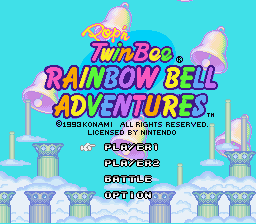 | Pop'n TwinBee: Rainbow Bell Adventure: The TwinBee games, like the Hebereke games (which we'll get to a little later), were deemed too cute for American audiences. At least, I can only assume that's what happened, as both the excellent shoot 'em up Pop'n TwinBee and this unusual platformer spin-off both skipped the Land of the Free. Rainbow Bell Adventure has a lot of great ideas though, carrying over TwinBee's colored bell power-ups (they now enhance things like jump height and melee attack length) and Super Mario World-style secret exits. The European version unfortunately cut out these secret exits for an entirely linear chain of stages and most of the story as well, so American TwinBee superfans (all three of them) shouldn't feel too burned by losing out on that version. |
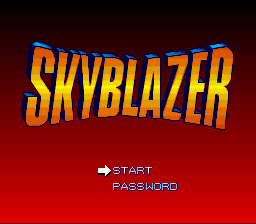 | Skyblazer: Skyblazer is one of those forgotten SNES gems that sadly didn't get the exposure it deserved, in part due to its obscure developer (Ukiyotei, which wouldn't do much else besides SNK grunt work). It's a fantastic game, however; a mix between Mega Man X, Strider and Sparkster. As Sky, the protagonist, gets further into the game he'll gain more abilities, not only increasing his firepower but his traversal abilities as well. Towards the end, you're shooting around like a comet, flinging past platforming sequences and taking down weird boss after weird boss. It has also some Super Mario World branching paths and secrets too, and both looks and sounds fantastic for a 1994 game. |
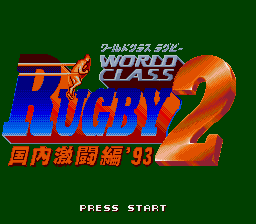 | World Class Rugby 2: Kokunai Gekitou Hen '93: As well as showcasing the big name favorites and diamonds in the rough, I'm going to be dropping into bizarre curios that perplexed me after discovering them. This game, for instance, is a Japan-exclusive sequel to a UK-developed rugby game. Apparently Japanese players couldn't get enough of England's particular interpretation of handegg and went to on to commission a sequel from the same developer. Either that, or some contract developers modified the original to have more anime in it. As someone who finds rugby odd enough despite living a handful of miles from several prominent rugby towns, it's extra bizarre to find a Japan-exclusive game based on the sport. Like seeing an anime reboot of Thomas the Tank Engine (outside of all those Attack on Tank Engine YouTube parodies at least). |
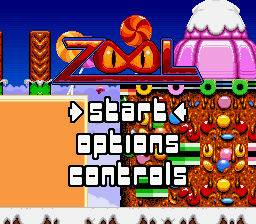 | Zool: Ninja of the Nth Dimension: It's funny, but Jeff's been making murmurs of once again trying to break into Amiga gaming despite being put off numerous times. He's created a thread to ask for recommendations, and once again everyone is bringing up action games that really don't do the Amiga any favors, most of which have Arcade or Mega Drive alternatives which would be far more preferable. Zool's one of those games: a fairly standard but decent enough platformer that really does better on a console like the Super Nintendo than the Amiga, which suffers with its one-button joystick. Zool's not too exciting on the SNES, where it's less of a big fish in a small pond and has to contend with comparisons to Super Mario World and Super Castlevania IV, but... well, I guess as an Atari ST kid, I have a certain amount of nostalgic reverence to that sneaky green alien from the Nth dimension. |
Honorary Mentions: Hey, are you a bored secretary from the mid-90s and like playing Windows Solitaire? How about a version with multiple Solitaire variations, that was inexplicably full of half-naked animes in the Japanese version? Super Solitaire might be what you're looking for. The developers of Bastard!! Ankoku no Hakaishin weren't sure what to do with the license for Bastard!!, the medieval fantasy brother of JoJo's Bizarre Adventure, so they turned it into a DBZ fighter game. Super Pinball: Behind the Mask is some pinball-ass pinball, but with a dark gothy motif because the 90s. Prepare to feel the unbearable anguish of the flipper bonus zones!
February
The releases start to pick up in February with a respectable total of twenty-eight new games, but it was the Sega Genesis that was drawing the most attention this month with the premiere of Sonic the Hedgehog 3. Unfortunately, the SNES didn't see anything that major this month, but we have a collection of interesting titles nonetheless.
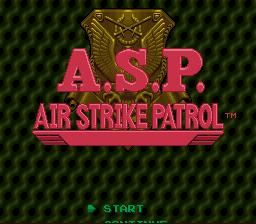 | A.S.P. Air Strike Patrol: This is a nostalgia pick for me. Very nakedly a Japan-produced (the devs, Opus, actually went on to create the Half-Minute Hero games) attempt to recreate the isometric chopper shenanigans of EA's excellent Strike series of open-world(ish) mission-based military games, ASP (or Desert Fighter) had players configure a jet and pilot loadout and go on "sorties" into mission areas to take down assigned targets. It uses Strike's mix of air-to-air and air-to-ground weaponry, looking for places to refuel, repair damage and restock ammo whenever one of those respective meters got too low, and frequently pausing to check the map to see if you were going the right way. It's not a bad clone, honestly, and the fact that you'll take regular sorties to different areas per mission means it has a lot of variety, even if most of the missions tend to involve flying over bases blowing parts of it up to reach a necessary destruction percentage. The one thing I do remember about the late-game is when you discover that the despotic leader of the fictitious Middle Eastern nation of Zarak is being helped by goddamn space invaders, and you have to blow up their mothership in the final mission with your F-16s Independence Day-style. Man, did that game get stupid. |
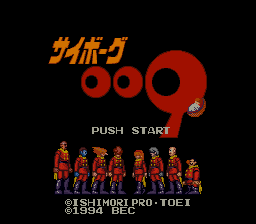 | Cyborg 009: A Japan-only platformer and one that didn't seem to be received too well, Cyborg 009 is based on an old 70s anime by legendary manga artist and TV writer Shotaro Ishinomori whose works, oddly enough, include a manga adaptation of A Link to the Past created for Nintendo Power. The game's curious because it allows for multiple protagonists - you switch them on the fly, sort of like Portrait of Ruin's two protagonists. You can only take two other characters with you, however, and there are eight characters in all each with their own special abilities. It mostly boiled down to the player's style when it came to deciding who to bring along: some characters are good for being sneaky and avoiding confrontation, while others are entirely offense-based. Pity its ideas didn't coalesce into something more satisfying, as it sounded like a neat attempt at a Mega Man/Lost Vikings hybrid. |
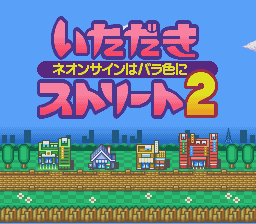 | Itadaki Street 2: Neon Sign wa Bara Iro ni: While this is the second official Itadaki Street game, it helped to establish more of the quirks that made Itadaki Street stand out above other Monopoly clones. Multiple players attempt to out-commerce each other as they walk over various boards buying properties and spending cash on improvements, though they can also choose to gamble and procure money by other means. Enix's involvement would eventually lead to a lot of Dragon Quest and Final Fantasy cameos further down the line, but for the occasional Slime-shaped board there wasn't too much of that yet. Still, this is really the game that began the whole Itadaki Street streak, so to speak, and we all remember what happened when the Bomb Crew tried their hand at Fortune Street, Itadaki's Wii incarnation. |
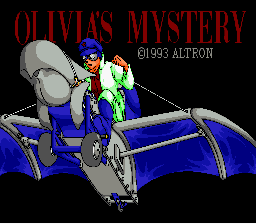 | Olivia's Mystery: I really didn't know what to make of this game. It feels budget-y as hell, and of course is entirely in Japanese, but the gameplay uses a format which I've heard referenced as "motion puzzles" in the past. In order to continue the game's story, the player must piece together scenes via jigsaw pieces that are constantly animating. If that's not enough of a distraction, there are several fake pieces that won't fit in the puzzle despite displaying part of the same picture. The animations are often as much a help as a hindrance, however, such as scenes where there's clearly rain falling down from the sky which helps determine which pieces need turning around. |
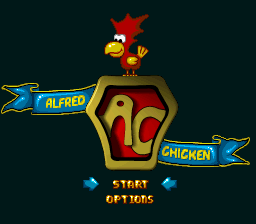 | Super Alfred Chicken: Talking of Amiga games slumming it on consoles, while there's games like Zool that are helped immeasurably with a 16-bit controller rather than a one-button joystick, there's also games like Alfred Chicken which, unfortunately, are perhaps beyond saving. Alfred's an especially quirky game of the sort Jeff would immediately recognize as European (just watch the site's Putty Squad QL for this perceptiveness in action). It's also fairly obtuse and not particularly fun either. Clearly someone thought highly enough of it to release it to the Super Nintendo though. |
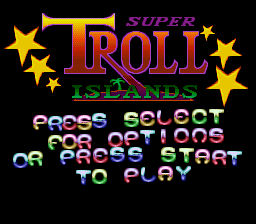 | Super Troll Islands: While this game initially looks like a risible attempt to market those hideous Scandinavian Troll dolls with the wild hair in as many 90s multimedia formats as possible, there's actually some creativity here. The game uses a City Connection/Q*Bert-style painting gimmick in which the player must canvas the entire stage with their feet in order to entirely restore its lost color. This means eluding enemies and finding the quickest route to take, and the platforming is workmanlike enough to not get in the way. I dunno if I'd spend too long playing a game based on Troll dolls, but at least it opted for an interesting premise. |
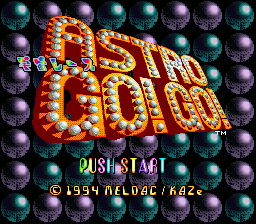 | Uchuu Race: Astro Go! Go!: It's a bizarre anime take on F-Zero, and that's usually sufficient to get me to sit up and notice. It's limited to one-player and five characters to choose from, including a skeleton named Bari who drives the Barivehicle. The courses are kind of nuts, throwing all sorts of jumps and speed arrows and one-way currents and other obstacles in your path. Unlike F-Zero, leaping to your doom isn't the end of the race, and the player is helpfully carried back onto the track with a robotic Lakitu ersatz. We were going to get a version of this ourselves, with the terrible name of Freeway Flyboys, but someone pulled the plug on the idea. Probably for the best. |
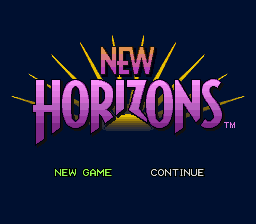 | Uncharted Waters 2: New Horizons: Uncharted Waters is an impressive game for a multitude of reasons, but the buccaneer simulator was jam-packed with different open-ended ways to play the game and different stories to follow. New Horizons appears to be more of what people liked in the first game, with various protagonists that each have a different goal in mind, from becoming a successful merchant kingpin to a Spanish-sinking privateer to a heavily in debt treasure hunter to murder-solving lady pirate to being the first cartographer to chart the known world. It seems insanely dense for a SNES game, but then that's Koei and their many various strategy franchises for you. |
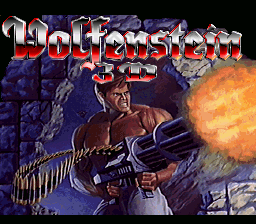 | Wolfenstein 3D: The Claw of Eisenfaust: Before SNES Doom there was SNES Wolfenstein 3D. The console obviously suffers a little trying to keep all those fancy 3D effects in check, but fortunately Wolfenstein 3D is a far more primitive dry run to what would become a very compromised (but still surprisingly spooky) version of Doom. Of course, you mention Wolfenstein 3D and the Super Nintendo to a lot of folk and the first thing that comes to mind is that ridiculous Super Noah's Ark 3D unlicensed game. |
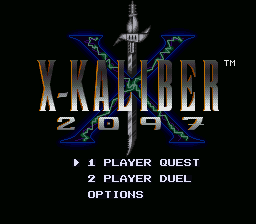 | X-Kaliber 2097: One of quite a number of cyberpunk sci-fi action games that tap into that era of 1990s gothic cool that so greatly amuses anyone who vainly tries to analyze the once-massive appeal of Spawn or The Crow in this day and age. I really have no idea what we were thinking back then, sorry. X-Kaliber 2097 was mostly known for being difficult as hell, if at all, but these days it has the dubious honor of being the original source of underground RPGMaker hit Barkley's Shut Up and Jam: Gaiden's sprite for its Zauber master Balthios. |
Honorable Mentions: Top Management II follows its forebear into the cutthroat world of business executives and spreadsheets in a game presumably for the 40+ aged. Winter Olympics: Lillehammer '94 brings the thrills of the Winter Olympics to consoles everywhere as the first official video game version of the chilly weeks-long event. Joe & Mac 2: Lost in the Tropics is actually the third Joe & Mac game, but who's counting? Presumably not a bunch of cavemen, given that humanity was still a few millennia away from inventing mathematics. They're happier throwing axes at pteradons.
March
March 1994 will be an exciting month for the Super Nintendo as we'll shortly find out, but it's also one of the busiest for the system. Forty-nine releases overall, which means March had as many releases as January and February put together. I'm not sure why this is a big month for releases; maybe it's an "end of the fiscal year" thing?
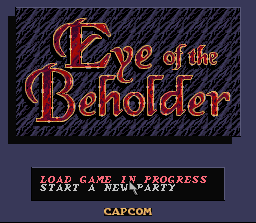 | Advanced Dungeons & Dragons: Eye of the Beholder: Westwood's Dungeon Master-inspired RPG series finally makes its SNES debut, joining other venerable PC RPGs such as Ultima, Wizardry and, well, Dungeon Master itself. It's an alright adaptation, one that has compatibility with the SNES Mouse to ensure that people aren't scrambling to the attack buttons whenever a gnoll shows up, but kind of pokey and underwhelming compared to its computer incarnation. Curiously enough, Capcom both developed and published this SNES port. CRPGs really don't seem like their wheelhouse. |
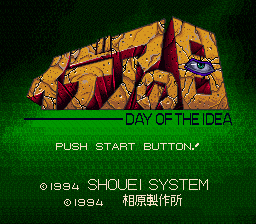 | Idea no Hi: Translated as "The Day of the Idea", this bizarre RPG features a young boy with psychic powers joining up with other oddball characters to discover what mysterious forces are threatening to destroy their eccentric, USA-inspired world. Nope, it's not EarthBound, but it's certainly just as strange and has a lot of gameplay similarities all the same. The surreal aspect is in part due to the involvement of satirical manga artist Koji Aihara, who both designed the characters and wrote the game's story. He also worked with the same developers, Office Koukan, to create the equally unsettling Maka Maka in 1992. Remember when they let any old nutcase develop an RPG? |
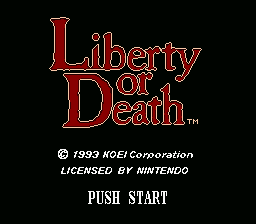 | Liberty or Death: Another dense Koei strategy game. Best known for developing Romance of the Three Kingdoms and Nobunaga's Ambition, Koei's "Historical Simulation Series" would try its hand at many different historical settings during its heyday, not least of which is this take on the American War of Independence. Fight the tyrannical King of England as Washington's blue coats, creating a Republic built on the principles of liberty and justice, or fight on the obviously correct side instead and silence a bunch of uppity Yanks so they can go back to paying through the nose for teabags. Easy enough choice if you ask me. |
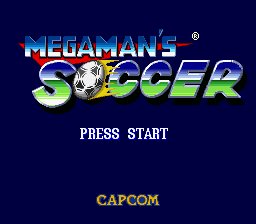 | Mega Man Soccer: Remember that exciting Super Nintendo release this month that I mentioned? Well, Mega Man Soccer isn't it, but it's certainly an interesting take on the Blue Bomber that I'm not sure was thought through all the way. For one thing, it doesn't really make sense that there would suddenly be eleven Mega Men running around. If it was that easy, surely Dr. Light would've taken over the world by now? Still, this appears to be the one soccer game even soccer-haters like most of the US seem to tolerate, if perhaps only for its novelty value. |
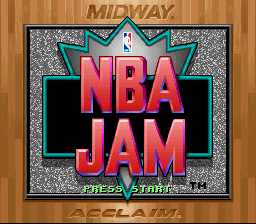 | NBA Jam: NBA Jam became an institution in due time, deconstructing the respectable and long-lived sport of basketball to its base constituents of jams and slams. The game had 90s attitude out of the ears, literally setting basketballs on fire when a player was doing well enough, and helping to usher in an age when basketball was the coolest thing going in the world of sports. Boomshakalaka indeed. |
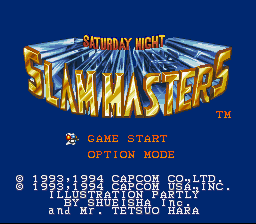 | Saturday Night Slam Masters: Capcom hadn't really dabbled in pro wrestling much, though it couldn't help but note that it created more than its fair share of incredible pro-wrestler characters in various other violence-based games they were known for. Saturday Night Slam Masters, also known by its Japanese name Muscle Bomber: The Body Explosion (perhaps the one title that can top "Saturday Night Slam Masters"), feels more like a standard fighting game than a wrestling game with the requisite grapples, holds and pins, but it sure does nail that 90s pro wrasslin' aesthetic. Its "made for primetime TV" visual style invites you to pull up a chair, then get off the chair so you can fold it up and hit someone over the head with it until either it or the other wrestler breaks in half. |
 | Shin Megami Tensei II: More Megami Tensei, Shin Megami Tensei II is the second game in the core series to be released for the Super Famicom, and continues to refine the formula of fighting, recruiting and evolving various demons in order to join the forces of Law or Chaos or neither in determining the fate of the world. It introduced a few concepts that would become widespread in the series and its spin-offs, such as how certain spells could be passed onto the "child" of two fused demons. Unusually for a game in which you can literally kill the Judeo-Christian God with Lucifer on your side, the game never saw a US release. Odd, that. |
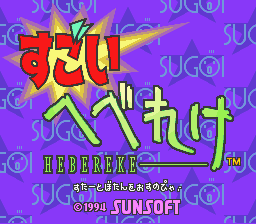 | Sugoi Hebereke: Most of the Hebereke games, featuring a drunken penguin in a beanie cap (Hebereke means "drunk" or "unreliable lout"), are of the Puyo Puyo puzzle variety. At least that was the case for Hebereke's Popoon and Hebereke's Popoitto, two of the three Hebereke games to see a European release (the US saw neither hide nor hair of this elusive soused bird until the Virtual Console era). Sugoi Hebereke, which loosely translates to Amazing Reprobate, is a four-player arena fighter and one of the earliest of its kind. SunSoft would go on to develop more games with this format, many of which would turn out way more interesting than this Bomberman-meets-Final Fight free-for-all. Still, though, why would all these adorable, vaguely Sanrio-esque mascot characters suddenly decide to throw down like this? Alcohol? Probably the alcohol. |
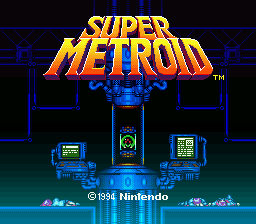 | Super Metroid: So I've beaten around the bush long enough, here. My bad for deciding to alphabetize these lists. Yes, the big release this month was Super Metroid, possibly the greatest Super Nintendo game of all time (coincidentally enough, one of the few games that might challenge that title is coming up next month). Super Metroid's base of a huge, open world filled with secrets and upgrades and immense bosses and a moody, incredible soundtrack and amazing visuals to buoy the player throughout their journey is something to behold, and games are still iterating on its formula to this very day (Axiom Verge literally came out a couple of days ago, as of this writing). Nintendo were still happy to prove that they were untouchable as game developers from time to time. |
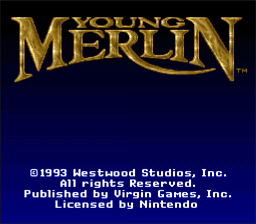 | Young Merlin: I've got kind of a weird history with this game. It's far too abstruse for my liking, contains the hardest minecart sequences this side of a Donkey Kong Country game and is filled with bizarre little touches that would go on to confound a younger me for many years. It sounds and looks pretty good for a Super Nintendo game, yet it also simultaneously has this distinctively janky quality (maybe it's the animations? Something felt a little off) that I would also go on to notice in ICOM's lackluster TurboGrafx output. Westwood Studios, creators of some of the greatest PC gaming franchises ever produced (Eye of the Beholder! Legend of Kyrandia! Lands of Lore! Command & Conquer, for Kane's sake!), developed this odd little Zelda-inspired action-adventure game presumably as a way to take a break from their headier PC work. What a mystery this game was, and continues to be. |
Honorable Mentions: March also saw the first of the Star Trek: TNG games with Star Trek: The Next Generation: Future's Past, an adaptation of the Genesis game Echoes from the Past. Ever wanted to see hyperintelligent Starfleet officers lower themselves to solving lever puzzles in top-down dungeons? Here you go. Talking of sudden losses of dignity, Chester Cheetah: Wild Wild Quest is the second game to feature the Cheetos mascot with a lithe feline form that somehow never accurately reflects the vast amount of corn snacks he puts away. KeroKeroKeroppi no Bouken Nikki: Nemureru Mori no Keroleen is a word salad title for a game starring Sanrio's frog character Keroppi, who must find his frognapped girlfriend in this kindergartener's first RPG. Super Robot Taisen EX is the third game in Banpresto's immense mecha crossover franchise (best known to us as Super Robot Wars), as well as the series' first of many spin-offs, which began a gaiden continuity that would finally be resolved in a game released last year. Last and probably least, we have the SNES adaptation of the Laserdisc QTE game Space Ace, which didn't quite do as well as its fantasy equivalent Dragon Lair despite having a sexier heroine. I guess magical dragons and evil wizards make for more impressive villains than some blue guy named Borf. (Repeat: We are all out of Borf license plates.)
The Bit at the End
Well, hopefully that didn't go on too long. I want to keep highlighting the weird stuff I find because this is largely the reason I do all this wiki work at all. It occasionally feels like archaeology, except instead of finding a shard of an ancient Etruscan urn, I'm finding a 16-bit golf game where I'm controlling Spike McFang of Twisted Tales fame, or stacking preservatives as a raccoon from the 1977 anime adaptation of a 1963 children's novel, or a Reversi board game adaptation featuring anime cats as pieces.
I want to share these games as I find them, and so I find myself displaying what I've found in what presumably comes off as self-aggrandizing "look how I chose to spend twenty hours of my finite lifespan this month" wiki navel-gazing. It's really all about the weird and wonderful world of games however, and how little our otherwise video-game-savvy collective knows of the madness that goes on when a successful console like the Super Nintendo gets perhaps a bit too popular for its own good.
Anyway, I hope you'll stick with me for future updates to this Wiki Project, as I continue to research Super Nintendo/Super Famicom games and update the Wiki with what I've uncovered. Until then, I'll see you next mission.
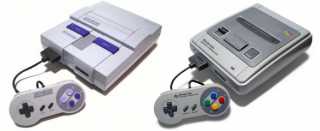
Log in to comment